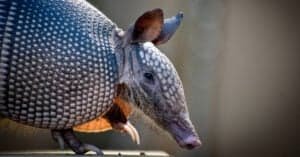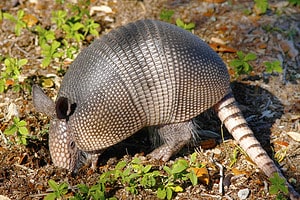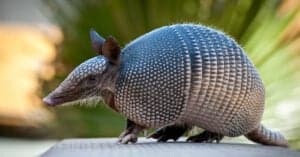The Pink Fairy armadillo, or Chlamyphorus truncatus, was first described in 1825 by Richard Harlan. It is also known by the Spanish name “pichiciego.” They are the smallest armadillo species. Isolated and well-suited to life in arid environments, this species was first discovered in central Argentina’s dunes, plains, and grasslands. Is it insanely cute or extremely eerie? Continue reading for 10 Incredible Pink Fairy Armadillo Facts!
1. The Pink Fairy Armadillo Have A Pretty Cool Nickname
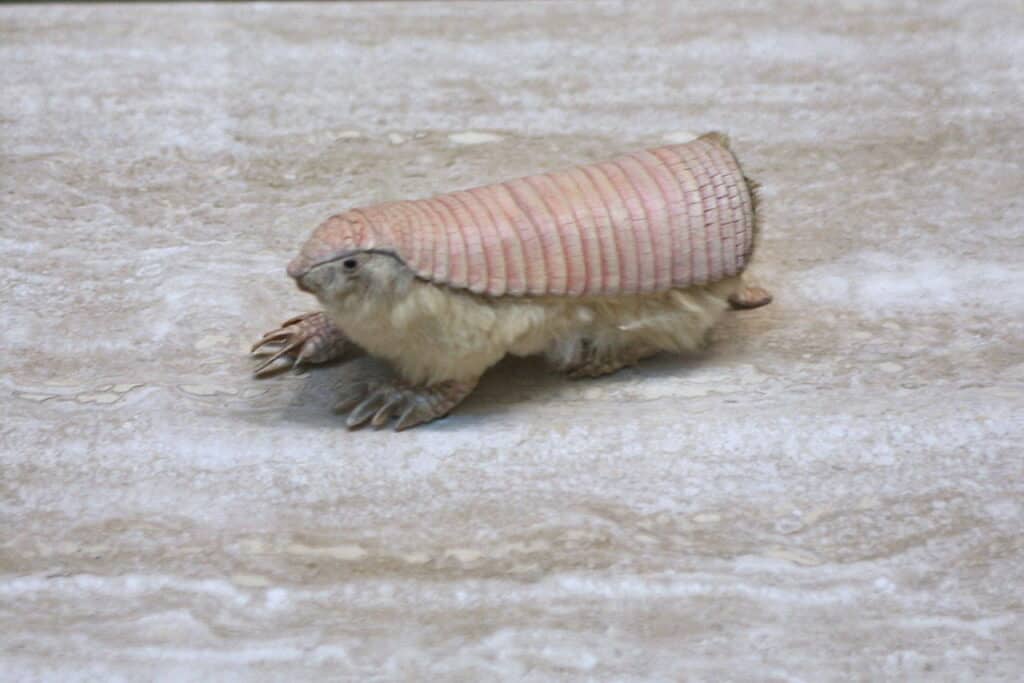
The pink fairy armadillo uses its claws to burrow into the sand.
©Cliff / CC BY 2.0 – License
The pink fairy armadillo has acquired the peculiar moniker “sand-swimmer.” Biologists have long assumed they can “swim” across the sand like a fish swimming in water. That is a fallacy, as the pink fairy armadillo uses its claws to burrow into the sand.
2. The Pink Fairy Armadillo’s Shell Has Bands So That They Can Roll Up
The pink fairy armadillo can curl up into a ball to protect its delicate soft underside because of the 24 bands that make up its armored shell. Even though it is softer and more flexible than other armadillos’ shells, it nevertheless serves as protection.
3. Pink Fairy Armadillos Can Thermo-Regulate Their Temperature
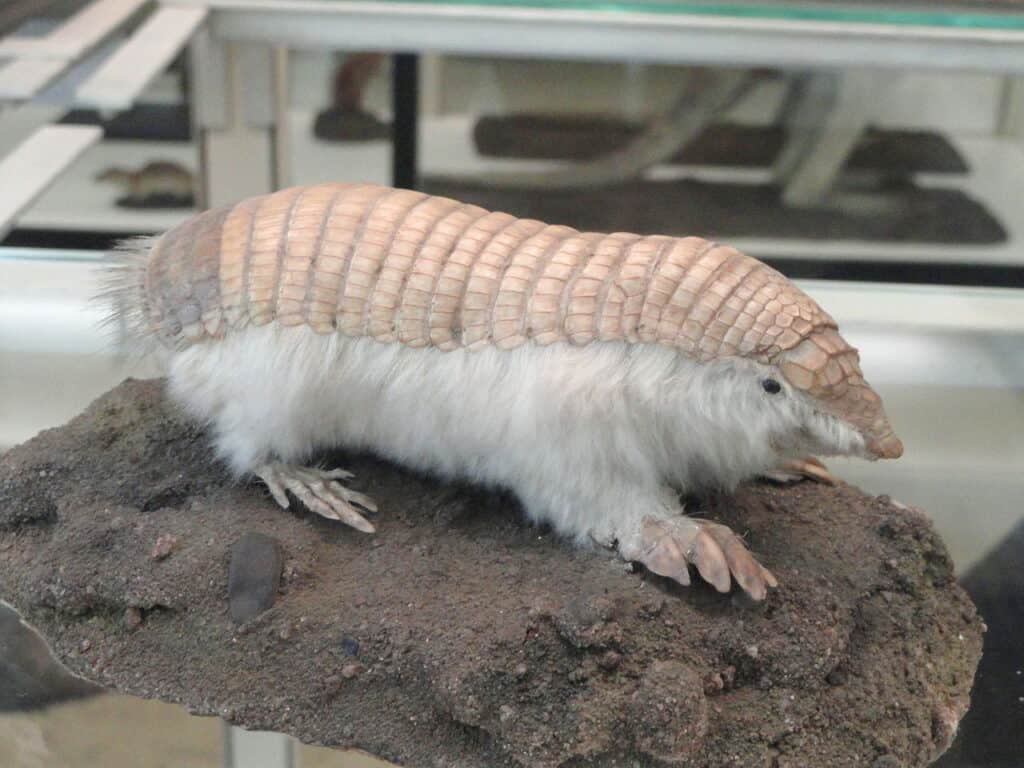
The pink fairy armadillos can regulate the amount of surface area exposed to the environment.
©Daderot / CC0 1.0 – License
The pink fairy armadillo’s shell is thought by scientists to aid in thermoregulation. The armadillo can regulate the amount of surface area exposed to the environment to gain or lose heat because its blood arteries are so close to the surface.
4. Pink Fairy Armadillo Shell Is Pink For A Reason
They have a network of blood arteries behind their armor that gives their shell its pink hue. This causes the pink or pale-rose color of the pink fairy armadillo shell. The main purpose of this delicate, malleable shell is temperature control rather than defense. It has blood vessels that periodically empty or fill to regulate the animal’s body temperature and give it its rose color.
5. Pink Fairy Armadillo’s Shell Can Change Color
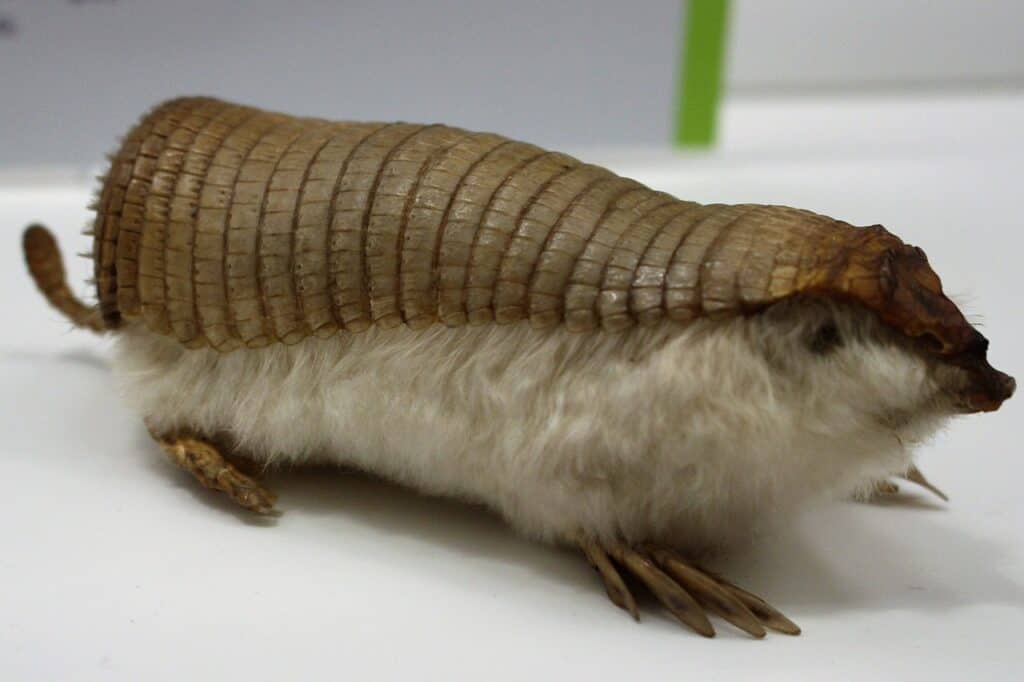
The pink fairy armadillo can draw blood out of the shell to keep body heat, resulting in a paler-looking shell.
©Emőke Dénes / CC BY-SA 4.0 – License
This is reliant on the environment and the armadillo’s capacity for thermoregulation. Increased blood irrigation into the shell’s carapace can assist it shed heat and giving off a more “pink” appearance. On the other hand, it can draw blood out of the shell to keep body heat, resulting in a paler-looking shell.
6. Pink Fairy Armadillos Navigate With Little to No Vision
The pink fairy armadillo originally navigates its environment without vision, thanks to its tiny eyes. This animal uses its senses of touch and hearing to navigate. The pink fairy armadillo’s body plays a significant role in its ability to burrow. Its torpedo-shaped design lessens drag when it is digging underground.
7. Pink Fairy Armadillos Need A Particular Environment

The pink fairy armadillo’s adaptations to the desert severely restrict the types of habitats it may live in.
©Daderot / CC0 1.0 – License
Because they are so sensitive to environmental changes, pink fairy armadillos can suffer greatly from the stress that results from it. The pink fairy armadillo’s adaptations to the desert severely restrict the types of habitats it may live in.
These mammals need uninhabited areas with adequate compact sand and hiding spots to shelter them from the elements and predators to live. Since they are considered subterranean armadillos, any environmental disturbance, particularly drastic variations in temperature or soil quality, may affect them.
8. Pink Fairy Armadillos Shells Are Highly Functional
The fairy armadillo’s shell is unusual because it is not primarily used for defense. Instead, thermoregulation is the primary purpose. Their shell serves other purposes besides regulating temperature. They can compress the dirt as they dig, thanks to a flattened “butt plate” on the back of their shell. It closes the tube behind it and makes more space for breathing in front.
9. Pink Fairy Armadillos Have Claws For Digging
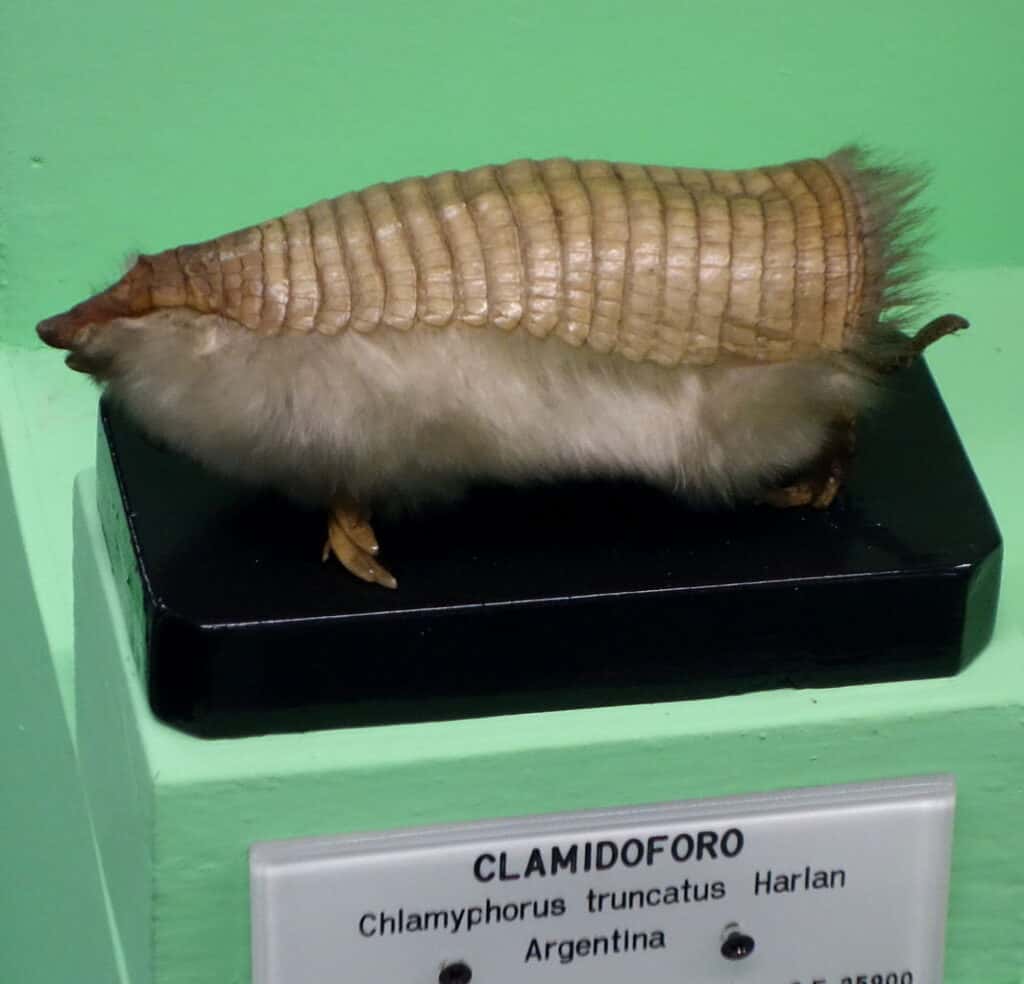
The size of the pink fairy armadillo’s digging claws makes walking on anything other than sand and soft surfaces difficult.
©Daderot / CC0 1.0 – License
It bears two gigantic pairs of claws on its front and back legs. The size of the digging claws, which are truly enormous in contrast to the animal’s scale, makes walking on anything other than sand and soft surfaces difficult. They are devices for digging burrows quickly in compacted dirt.
10. Pink Fairy Armadillo’s Body Is Separate From Its Shell
. Pink fairy armadillos have tiny eyes, smooth yellow-white fur, and a thin dorsal shell that is only attached to the flesh by a delicate dorsal membrane. And its tail, which is shaped like a spatula, is a vertical plate that projects from the back of its shell. The pink fairy armadillo is the only armadillo species whose dorsal shell completely splits from its body. Its single touch site with the body is where its spine runs directly along a thin membrane.
Related Animals:
The photo featured at the top of this post is © Daderot / CC0 1.0 – License / Original
Sources
- A-Z Animals, Available here: https://a-z-animals.com/animals/pink-fairy-armadillo/
- Wikipedia, Available here: https://en.wikipedia.org/wiki/Pink_fairy_armadillo
- Group Nine Media, Available here: https://www.thedodo.com/in-the-wild/pink-fairy-armadillo-facts-conservation
Thank you for reading! Have some feedback for us? Contact the AZ Animals editorial team.



